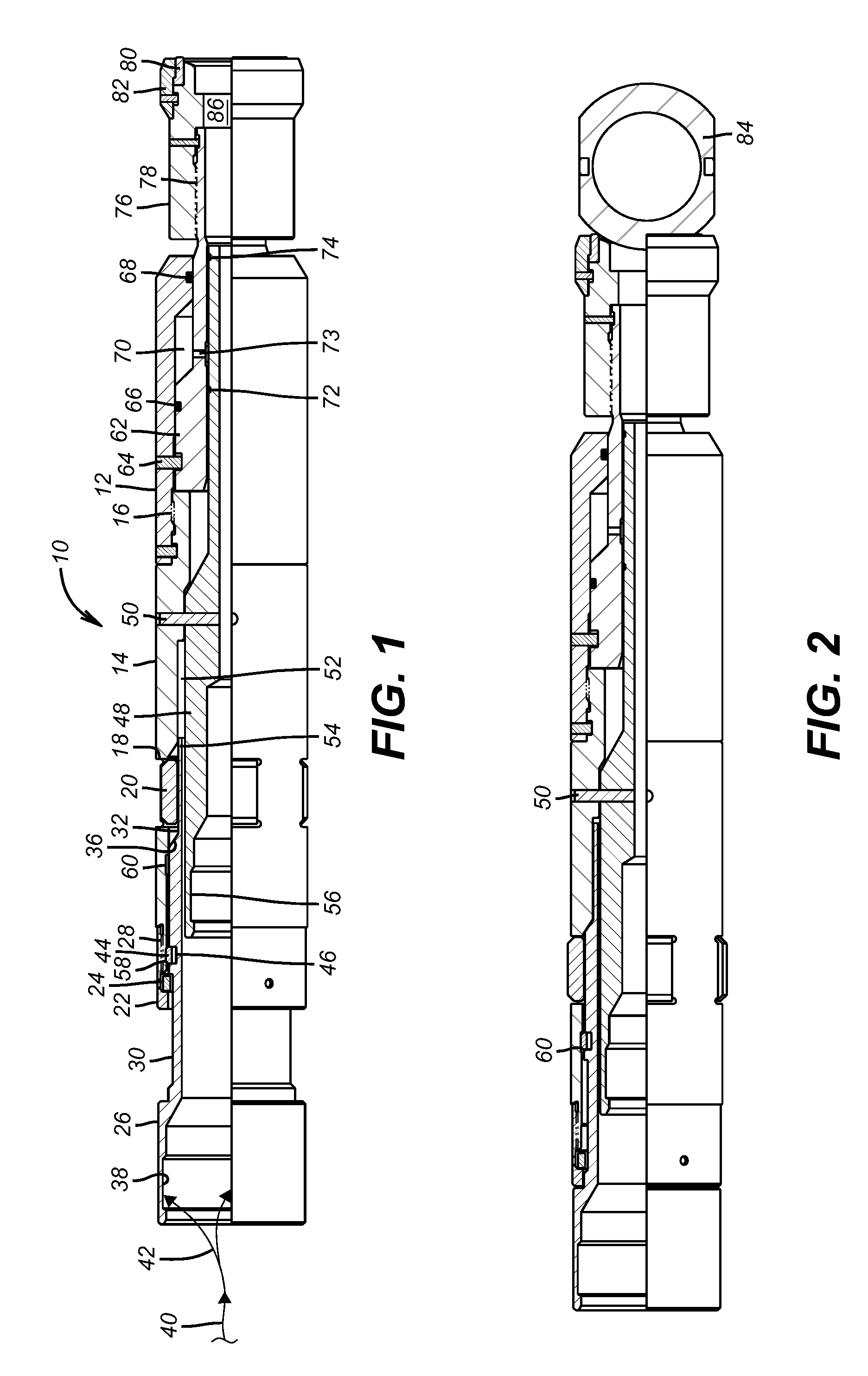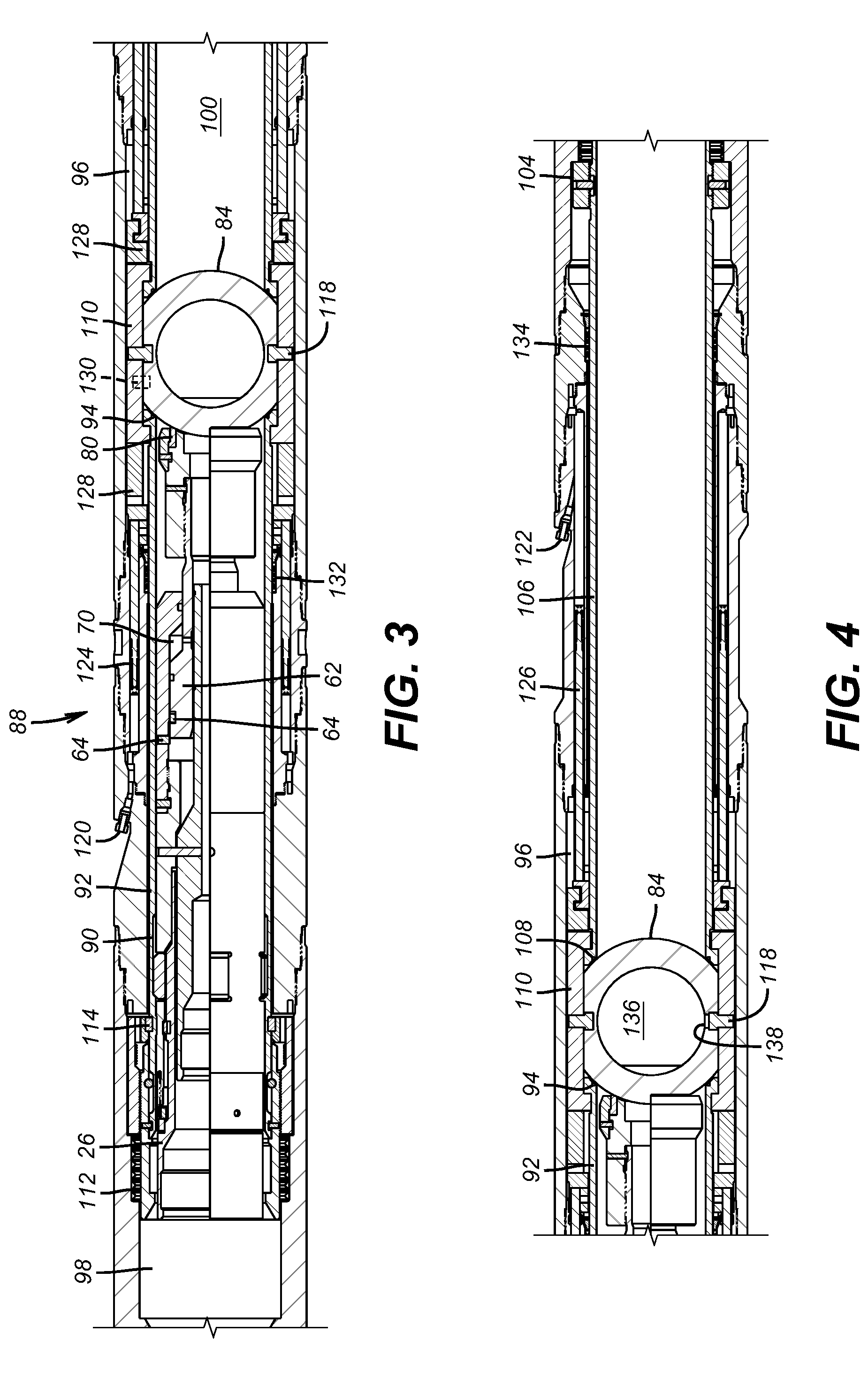Pressure Equalization Device for Downhole Tools
- Summary
- Abstract
- Description
- Claims
- Application Information
AI Technical Summary
Benefits of technology
Problems solved by technology
Method used
Image
Examples
Embodiment Construction
[0014]FIG. 1 shows the equalization tool 10. It has a lower body 12 and a dog housing 14 secured at thread 16. Dog housing 14 has openings 18 through which dogs 20 can be extended. A top sub 22 retains ring 24 internally so that actuator 26 can be fully extended to the position in FIG. 1 without coming out of the top sub 22. Top sub 22 is secured to the dog housing 14 at threads 28. Actuator 26 has a larger outer diameter 30 and a small outer diameter 32 separated by tapered surface 36. In the run in position of FIG. 1 the tool 10 has the actuator 26 fully extended so that the small outer diameter 32 is under the dogs 20 so that the dogs 20 are retracted into the openings 18. Actuator 26 has an internal groove 38. The tool 10 is run in on wireline 40 with a jar tool or other known tool that can create a jarring force on actuator 28 preferably at groove 38 with the jarring force shown schematically as arrows 42. Those skilled in the art will appreciate that in the FIG. 1 position a s...
PUM
 Login to View More
Login to View More Abstract
Description
Claims
Application Information
 Login to View More
Login to View More - R&D
- Intellectual Property
- Life Sciences
- Materials
- Tech Scout
- Unparalleled Data Quality
- Higher Quality Content
- 60% Fewer Hallucinations
Browse by: Latest US Patents, China's latest patents, Technical Efficacy Thesaurus, Application Domain, Technology Topic, Popular Technical Reports.
© 2025 PatSnap. All rights reserved.Legal|Privacy policy|Modern Slavery Act Transparency Statement|Sitemap|About US| Contact US: help@patsnap.com



